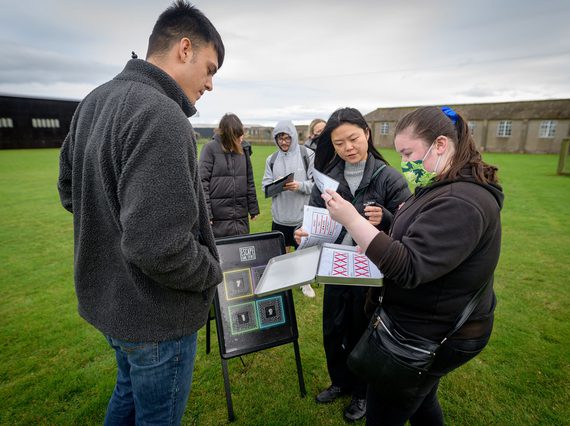
Resources and reports
A range of research, additional consultation, consortium partner reports and external evaluations have been created through the Scotland 365 project. As the museum continues its journey in youth engagement we will continue to add to this resource.
A Toolkit for Meaningful Engagement with Young People in the Heritage Sector
A ‘Toolkit for Meaningful Engagement with Young People in the Heritage Sector’ was produced as part of the Scotland Creates project in 2014 where young people worked on projects across Scotland. The guidance and case studies produced from this work informed the development of the Scotland 365 project. Learning from the Scotland 365 project has now been incorporated into this guidance along with reflections and recommendations from delivery across 2018 – 2022. This is not a static resource but something that will grow over time as the museum embarks on further youth engagement informed by recommendations from young people and key learning from past projects.
Download
Reports
The outputs from the project are largely experimental prototypes, however, the depth of research and enquiry involved to create those prototypes have manifested a strong set of recommendations for the museum to embrace.
Sherbert Research (2019) Young people (16-25s) in Scotland: Engagement with heritage and museums.
In 2018, National Museums Scotland commissioned an agency, Sherbert Research, to undertake a consultation engaging a representative sample of 500 young people across Scotland. The survey aimed to support the development of our understanding of the spectrum of relationships young people have with heritage and factors affecting this. It was possible to group respondents according to their interest in heritage and connection with museums, producing four segments: Inspirations Seekers; Culture Seekers; Entertainment Seekers; and Connection Seekers. The voices of these young people informed the development of Scotland 365’s Activity Plan - a programme of work designed to test a range of different engagement methods, each aimed at engaging a specific segment of the population of young people.
Download
Scotland 365 External Evaluation report
The Scotland 365 project has been externally evaluated by Research Scotland and the report provides an overview of the programme of work framed around the outcomes of the project which were a mixture of National Lottery Heritage Fund mandatory outcomes and National Museum of Scotland ambitions for the project.
Scotland 365 employed 3 ‘Young Evaluators’ alongside our external evaluators to provide a peer perspective on the best tools for evaluating with and for 16 – 25-year-olds. A short version of the external evaluation was prepared by the Young Evaluators in collaboration with Research Scotland.
Download
Young Scot report
As a consortium partner of Scotland 365, Young Scot have been involved with the museum since the project's inception. This report provides a detailed overview of the work of the Youth Engagement Team (YET), the co-design methods used to work with young people and staff to reach the ambitions of each of their projects and the set of recommendations for future youth engagement developed by the YET.
Download
Scotland 365, Schools consultancy report 2022
A key question that arose from stakeholders across the S365 programme was ‘How we might foster a lifelong relationship in young people with heritage and museums?’.
Exploring youth engagement needs to be through the lens of both formal and informal education. Due to Covid we were unable to deliver a schools project exploring ‘how we might foster a lifelong relationship in young people with heritage and museums?’ in the museums space. Instead we worked with WAVEparticle to reach out to schools across the country. This report is a focused exploration of that question through the voice of over 160 school children, young people and teachers, a summary of a national survey and a set of recommendations for future schools and young people’s engagement in museums. The full report contains the survey templates and creative tools implemented by WAVEparticle as a shared resource.